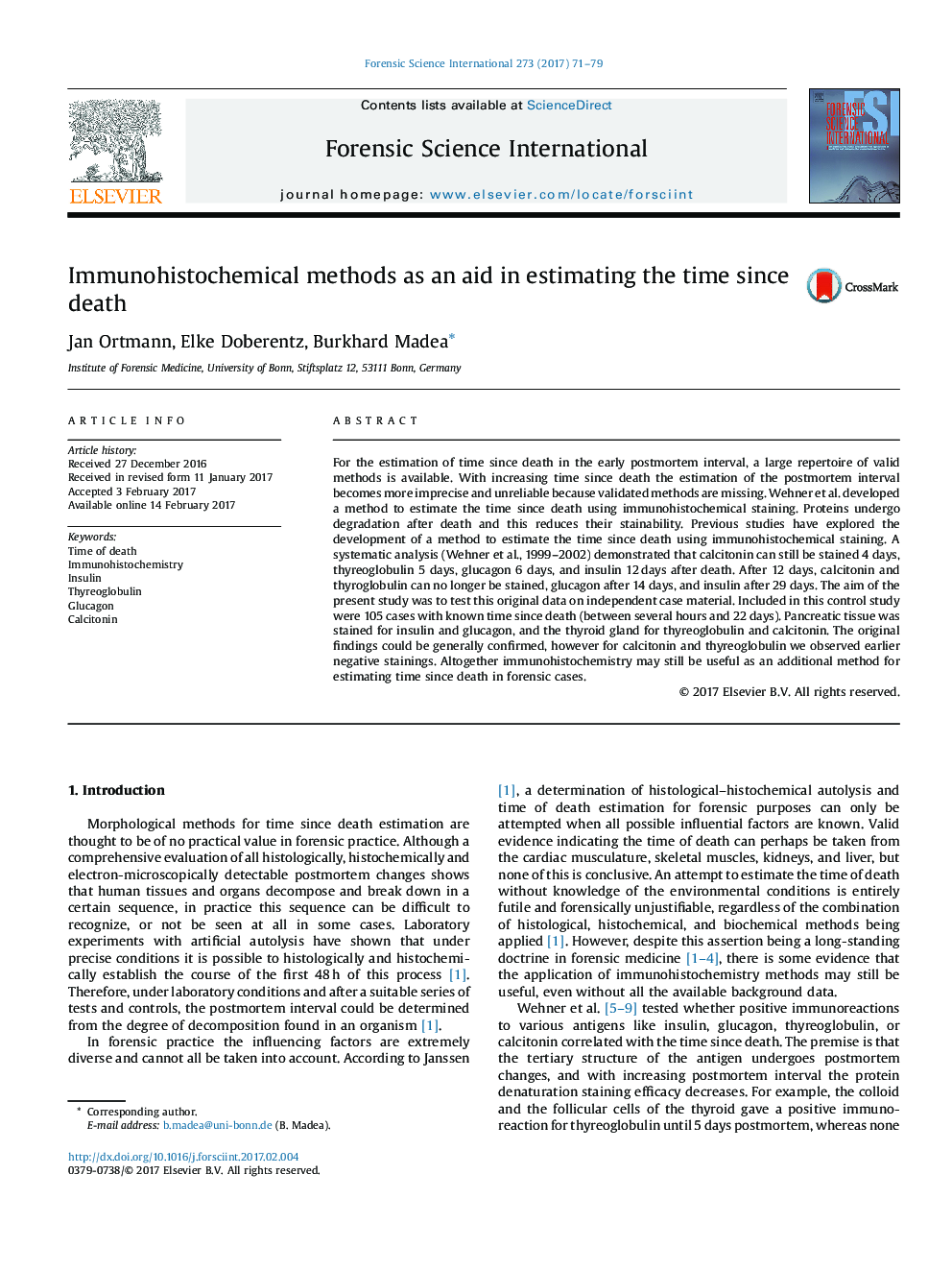| Article ID | Journal | Published Year | Pages | File Type |
|---|---|---|---|---|
| 4760331 | Forensic Science International | 2017 | 9 Pages |
â¢A method to estimate the time since death using immunohistochemistry was exposed.â¢With increasing postmortem interval (pmi) the stainability of antigens decreases.â¢This allows a rough estimation of the time since death.â¢In this first control study the reduced stainability of antigens can be confirmed.â¢For thyreoglobulin and calcitonin we received much earlier negative stainings.
For the estimation of time since death in the early postmortem interval, a large repertoire of valid methods is available. With increasing time since death the estimation of the postmortem interval becomes more imprecise and unreliable because validated methods are missing. Wehner et al. developed a method to estimate the time since death using immunohistochemical staining. Proteins undergo degradation after death and this reduces their stainability. Previous studies have explored the development of a method to estimate the time since death using immunohistochemical staining. A systematic analysis (Wehner et al., 1999-2002) demonstrated that calcitonin can still be stained 4 days, thyreoglobulin 5 days, glucagon 6 days, and insulin 12âdays after death. After 12 days, calcitonin and thyroglobulin can no longer be stained, glucagon after 14 days, and insulin after 29 days. The aim of the present study was to test this original data on independent case material. Included in this control study were 105 cases with known time since death (between several hours and 22 days). Pancreatic tissue was stained for insulin and glucagon, and the thyroid gland for thyreoglobulin and calcitonin. The original findings could be generally confirmed, however for calcitonin and thyreoglobulin we observed earlier negative stainings. Altogether immunohistochemistry may still be useful as an additional method for estimating time since death in forensic cases.
Graphical abstractDownload high-res image (108KB)Download full-size image
